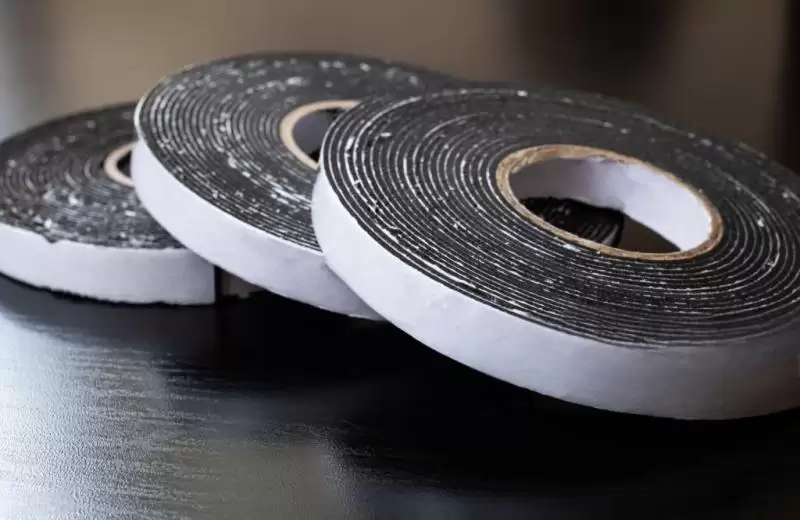
If you work on cars, you've probably encountered butyl tape automotive applications without even realizing it. This versatile material serves as the invisible hero in automotive manufacturing and repair, creating durable seals that stand up to harsh conditions. But what exactly is this product, and where should you use it?
What is Butyl Tape?
Butyl sealant tape is a synthetic rubber-based material that remains permanently flexible. Unlike other sealants that harden and crack over time, rubber butyl tape maintains its elasticity and adhesion for years. This makes it ideal for automotive applications where vibration, temperature changes, and weather exposure would destroy ordinary sealants.
Key Automotive Applications
1.Windshield and Window Sealing
Modern vehicle windows often use butyl tape automotive solutions for initial installation. The tape creates an immediate bond that holds the glass in place while providing a waterproof barrier. This application demonstrates why proper butyl tape removal techniques are crucial for repairs - the strong adhesion requires specific methods for clean removal.
2.Door and Trunk Seals
Between body panels and weather stripping, butyl sealant tape creates airtight seals that block wind noise and water intrusion. The tape's flexibility allows it to conform to irregular surfaces, ensuring complete coverage even on complex curves.
3.Headlight and Taillight Assemblies
Rubber butyl tape provides the perfect sealing solution for lighting components. It withstands engine compartment temperatures while creating a waterproof seal that prevents moisture damage and condensation.
4.Body Panel Seams
In strategic locations throughout the vehicle body, butyl tape automotive products dampen vibrations and prevent water penetration. This application reduces noise while protecting against corrosion.
Proper Installation Techniques
For optimal performance with butyl sealant tape, follow these professional guidelines:
1.Surface Preparation: Clean all surfaces thoroughly with alcohol or specialized automotive cleaners. Even small amounts of oil or dirt can compromise adhesion.
2.Temperature Matters: Apply rubber butyl tape when temperatures are above 50°F (10°C). The material becomes more pliable and adhesive when warm.
3.Application Pressure: Press firmly along the entire tape surface. The goal is to achieve complete contact without stretching the material unevenly.
4.Time Allowance: While butyl tape automotive products create immediate seals, allow 24 hours for full adhesion development before exposing to water or stress.
Removal and Replacement
Understanding butyl tape removal is equally important. When replacement becomes necessary:
• Warm the tape gently with a heat gun or hairdryer
• Use plastic trim tools to avoid damaging surfaces
• Remove residue with specialized automotive adhesive removers
• Clean the area thoroughly before applying new tape
At QKD, our 15+ years of experience have taught us that proper butyl tape removal and installation techniques are just as important as the product quality itself.
Why Choose QKD Butyl Tape?
Not all butyl sealant tape products perform equally. QKD formulations offer:
• Superior Temperature Resistance: From -40°F to 200°F (-40°C to 93°C)
• Long-Lasting Flexibility: Unlike cheaper alternatives that become brittle
• Consistent Adhesion: Batch-to-batch reliability professionals depend on
• Weather and Chemical Resistance: Stands up to automotive fluids and environmental exposure
Common Questions Answered
Q1:How long does butyl tape last in automotive applications?
Properly installed rubber butyl tape typically lasts 5-10 years, depending on environmental conditions and application stress.
Q2:Can butyl tape be painted over?
Most butyl tape automotive products can accept paint, but check manufacturer specifications for compatibility with your specific paint system.
Q3:Is butyl tape resistant to automotive fluids?
Quality butyl sealant tape resists oil, coolant, and washer fluid, but prolonged direct exposure should be avoided.
The QKD Difference
Through 15+ years of automotive industry experience, QKD has refined our butyl tape automotive formulations to meet real-world demands. We understand that a sealant must not only stick initially but maintain its properties through years of vibration, temperature cycles, and weather exposure.
Our technical support team brings this experience directly to your projects, helping you select the right butyl sealant tape for specific applications and providing guidance on installation techniques that ensure long-term performance.
Whether you're sealing a new headlight assembly, repairing a door weatherstrip, or performing windshield replacement, choosing the right rubber butyl tape makes the difference between a temporary fix and a permanent solution. Trust QKD for seals that last.
